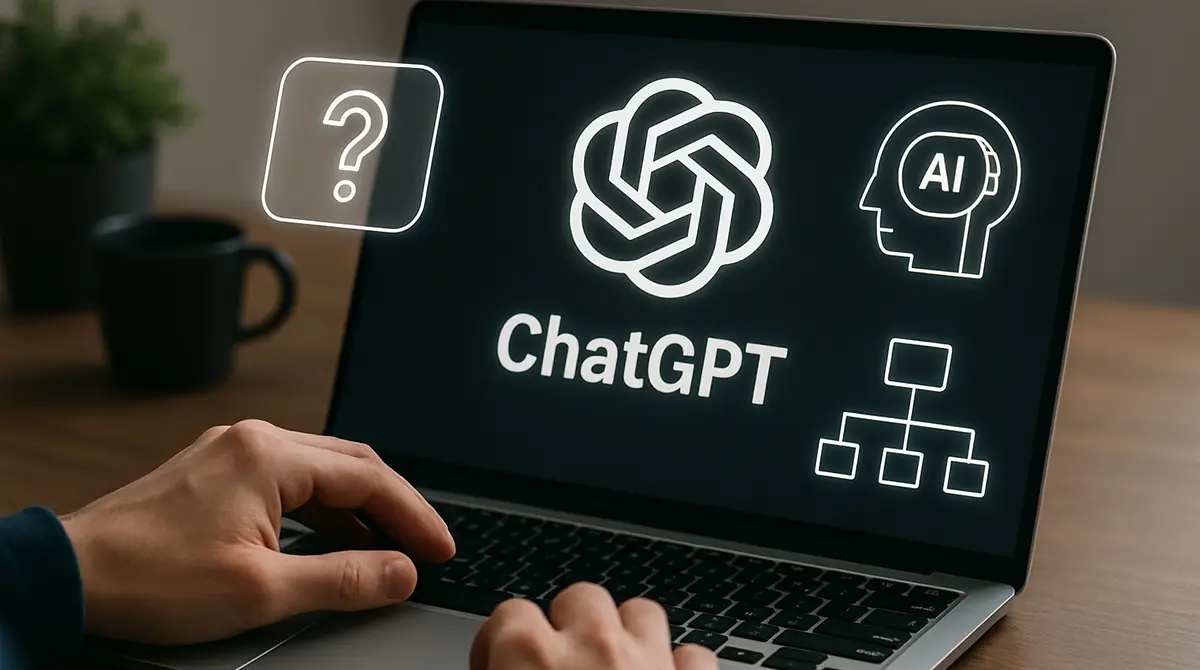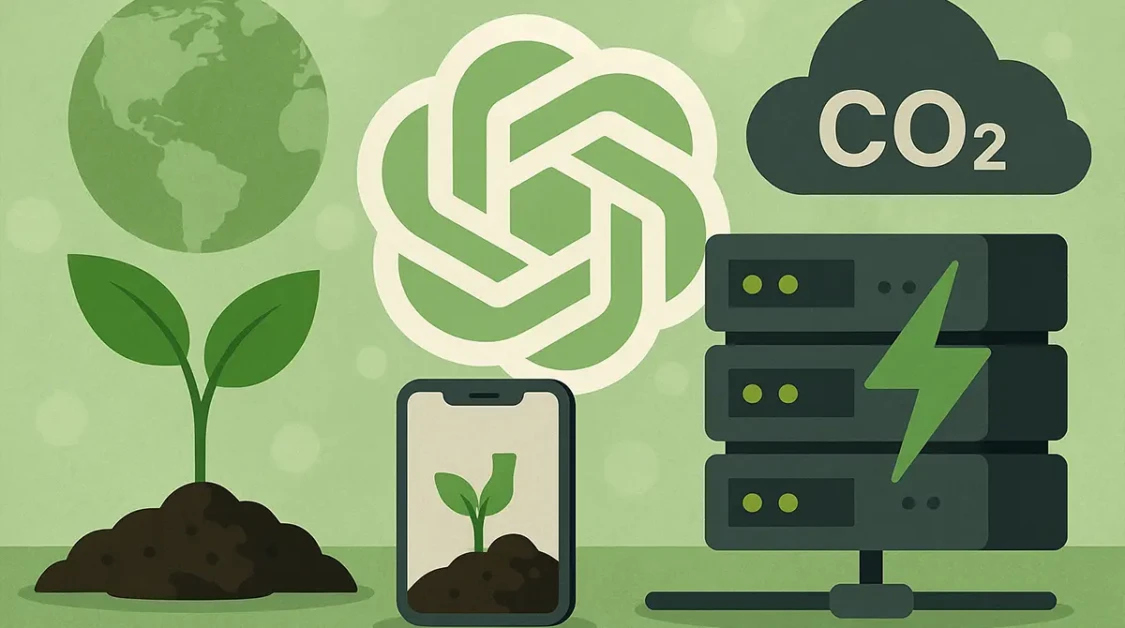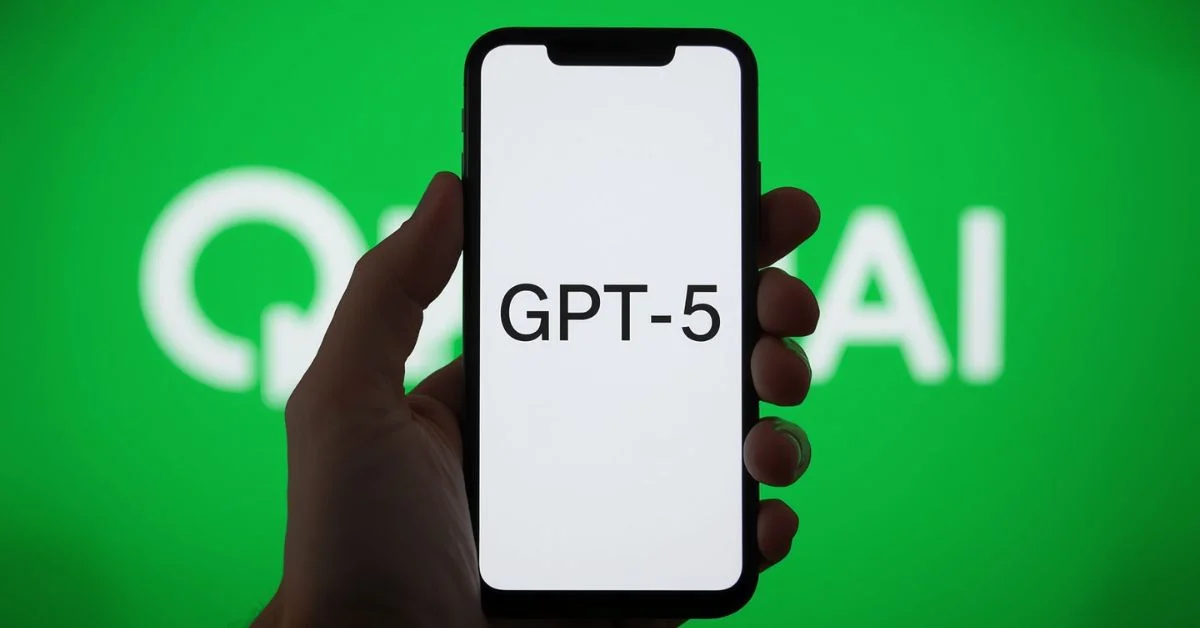When ChatGPT launched, millions of people met a virtual conversationalist that could research topics, draft emails, and even simulate characters. The buzz is no accident. Large language models like OpenAI’s ChatGPT compress human knowledge into a tool you can chat with in plain sentences. Below, you will find a plain-language breakdown of what ChatGPT actually is and the key techniques that let it convert the next-word prediction into rich, context-aware replies.
What ChatGPT Means in Everyday Terms?
ChatGPT is a chat interface sitting on top of a family of large language models branded GPT—short for Generative Pre-trained Transformer. In practical terms, you type a sentence, the model guesses what most naturally comes next, and the cycle repeats until a full answer appears. That single mechanism, scaled to hundreds of billions of parameters and enriched with safety guidelines, creates a system that feels like collaboration.
Unlike search engines that point to pages, ChatGPT drafts brand-new paragraphs on the spot. This difference is why descriptions such as AI writing assistant, conversation agent, or semantic reasoning engine often pop up alongside the product name.
From Training Data to Talking: How ChatGPT Works?
The model arrives in your browser through four core stages that turn raw text into helpful dialogue.
Step 1: Massive Pre-training on the Web
Billions of sentences teach the neural network the statistical fabric of language—grammar, facts, idioms, and even programming syntax. During this stage, the model is not told which answers are correct, only what words usually follow other words.
Step 2: Reinforcement Learning from Human Feedback
Human reviewers rank multiple possible replies for thousands of prompts. The model then reshapes its internal probabilities to prefer the answers people judge as more helpful, truthful, or safer.
Step 3: System Prompts and Guardrails
OpenAI adds invisible instructions—so-called system prompts—that gently steer tone, refuse harmful requests, and remind the model of date cut-offs. These prompts sit quietly before every user message.
Step 4: Token Smashing and Reassembly
Your sentence is chopped into tokens, roughly sub-word units like “chat”, “-ter”, or “ing”. Numerical vectors represent each token and slide through the transformer layers. Attention heads calculate how every earlier token should influence each next-token prediction. The result is a probability cloud over 50,000 possible tokens, from which the most likely candidate is chosen.
Architecture at a Glance
A transformer is a stack of identical layers. Inside every layer, you will see two connected networks:
- Multi-head self-attention decides which pieces of earlier context matter for the current token.
- Feed-forward network refines the representation with learned patterns stored in millions of learned weights.
Adding more layers and neurons gives what researchers call bigger capacity, but the blueprint stays identical.
What You Can Ask ChatGPT to Do Right Now?
The interface feels open-ended, yet standout use-cases have crystalized across domains.
Text Generation & Editing
From marketing copy to journalistic research briefs, users hand a bullet outline to the model and receive a first draft in seconds.
Code Completion & Explanation
The same transformer architecture trained on GitHub datasets can auto-complete Python functions, generate unit tests, or translate shell scripts to PowerShell.
Brainstorming & Summarization
Teams mind-map campaign slogans and press “regenerate” until creativity peaks. Long reports shrink into a three-bullet reading summary.
| Task | Typical Prompt Snippet | Deliverable Output |
|---|---|---|
| B2B Blog Introduction | Write 120 words with a hook about the cost of hiring | Short form prose with KPI hooks |
| Python Debugging | Explain IndexError in this traceback… | Commented fix plus rationale |
| Meeting Recap | Summarize the following transcript… | 3 bullet actions |
Real-World Results Across Industries
- Sunset Skincare Startup: Cut customer ticket response time by 68 % using a tailored bot built on ChatGPT.
- Rural Health Clinic: Drafts patient-friendly discharge instructions, freeing 4 nursing hours per day.
- Boutique Law Firm: Creates first drafts of lease agreements 78 % faster than manual writing.
- Non-Profit Research Lab: Generates concise science summaries for donor newsletters and doubled email open rates.
These snapshots show organizations moving from novelty to measurable operational gain.
Limitations You Should Factor Into Any Plan
Understanding the edges keeps expectations realistic and workflows responsible.
- Knowledge caps: Training data stops at the model’s cutoff date. Use plugins or browse mode for fresh events.
- Hallucinations: High confidence can pair with factual errors. Always review mission-critical outputs.
- Privacy risk: Any sensitive data sent to the chat window may be stored. Companies should enable zero-retention APIs when available.
- Ethical blind spots: Trained on net-wide text, so patterns of bias and unfair stereotyping can surface. Human review remains vital.
Getting Started: A Quick 3-Step Process
If you want hands-on experience, follow this lightweight starter loop:
- Set a task scope: Define the deliverable (email, SQL snippet, table of blog ideas).
- Refine through iteration: If output is close but too wordy, reply “Condense to half the length, bullet format”.
- Apply human polish: Add domain expertise, check facts, and adjust tone to brand style.
Future Roadmap: What Might Come Next?
Multimodal capabilities already blend text and images; future releases may handle audio streams and interactive charts in one context window. Most industry watchers expect personalized models that companies fine-tune on their own corpus while retaining generic reasoning strength.
Regulatory guidance is another moving piece. Expect clearer standards on explainability and data provenance as adoption deepens.
Key Takeaways
ChatGPT is not magic; it is a statistical pattern machine enlarged to Internet scale, refined by human judgment, and wrapped in a chat shell. When you see the model produce a concise summary or a flawless SQL query, you are witnessing the layered intelligence of attention vectors, feedback loops, and guardrail engineering.
Adopt it early, stay skeptical of its claims, pair each output with human oversight, and you gain a versatile collaborator that accelerates typing but never replaces critical thinking.



